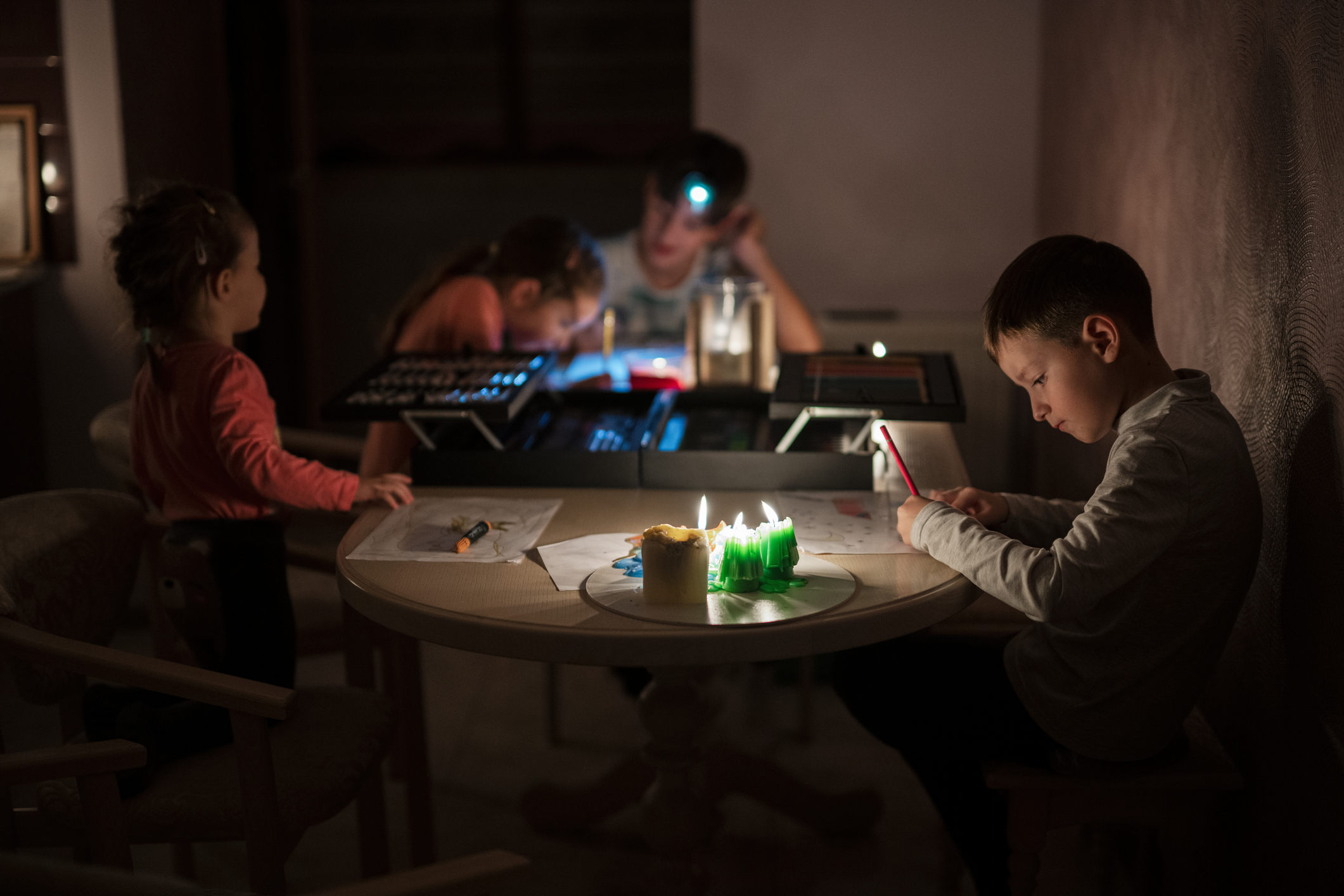“Mom, what do you think I should do?” my kid asked. “Shoes or sandals?” I looked out the window. Sunny, but cold. “Wear your—” I started to say but stopped. I busied myself with trying to find my car keys. “I don’t know,” I murmured. “What do you think?” My child decided on sandals, and that was fine. It wouldn’t have been my choice. But he needed to have the experience of cold toes to make this decision for himself next time.
We can turn our kids’ questions right back at them and force them to think for themselves. We can also use these 5 ways to get your kid to think for himself. Over time, you’ll find your child has grown in confidence because he’s developed a lifelong skill.
1. Let him help himself more.
“Do you want me to hel—” I stopped mid-sentence. My children need more practice working through their struggles and figuring things out for themselves. Whether they can’t find clean socks, are having a terrible time cutting meat, or have gotten stumped on a math problem, it’s better for them in the long run if we don’t jump in right away. They may get frustrated—especially if they’re used to you swooping in—but don’t be afraid of the outburst. Once kids learn to handle challenges on their own, they’ll gain the confidence they need to do more for themselves going forward.
Be the anti-helicopter. Ground yourself in another room.
2. Give her choices as much as possible.
Mother of two CEOs and a doctor, author and educator Esther Wojcicki said she wanted her daughters to become “skillful decision-makers from a young age.” So, what did she do? She constantly gave them choices. Don’t hold the “right answer” in your mind. If your child thinks there’s only one way to do something, she’s going to hesitate to make decisions for herself. If we want to encourage critical thinking in our kids, we need to be a little more flexible with what we accept.
Tear up the answer sheet and approach life with your kids Mad Libs style. Their answers may not be perfect, but they’ll enjoy the process more (and be more willing to take a chance) if they’re free to figure things out for themselves.
3. Allow him time to problem-solve.
A lot of critical thinking for kids develops when they’re given time to sort through a struggle or challenge. Maybe it comes in the form of correcting the mistakes he made on a quiz. Or maybe it’s time in his room to think about how he hurt his sister’s feelings. In the classroom and in life, we want kids to analyze what they hear and read and then form their own opinions.
Screen time isn’t thinking time. Power down in the car or after school and instead, ask what-if questions to get kids thinking about various situations.
4. Create an environment where imperfection is welcome.
As a little kid, my son had a million questions about volcanoes. He wanted to know how they could form in the ocean. And why some stayed dormant for hundreds of years and then woke up. But as he got older, some of that beautiful curiosity disappeared as he was told the right and wrong ways of doing everything—from schoolwork to making his bed. I wish I’d allowed more room for messiness! Wojcicki’s writing implies that curiosity and the perfect way of doing things are opposites. And, she says, the “spark of curiosity…arises from independent thinking.” When a child isn’t told how to do things all the time, he’s going to have more room to be curious, be creative, and figure out what he thinks. All of this builds confidence too.
When a child isn’t told how to do things all the time, he’s going to have more room to be curious, be creative, and figure out what he thinks. Click To TweetIs your child afraid of doing things the wrong way? Let’s not let perfection snuff out his desire to explore, create, and think for himself.
5. Give them the freedom to discover what brings them joy.
I wanted my kids to play the violin like I did, but after much time and effort, I could see they didn’t love it. So, one after the other, they both quit. Years later, my son decided to take up the trombone and my daughter, the cello. And I am humbled by the passion they currently have for these instruments. Letting them think and decide for themselves allowed them to find joy in places I didn’t expect.
Guide more, direct less. Think of yourself on the sidelines cheering, not chasing them with a whistle.
Critical thinking for kids can develop if we give them the time and space to practice thinking for themselves. What area of your child’s life do you want to guide more than direct?










